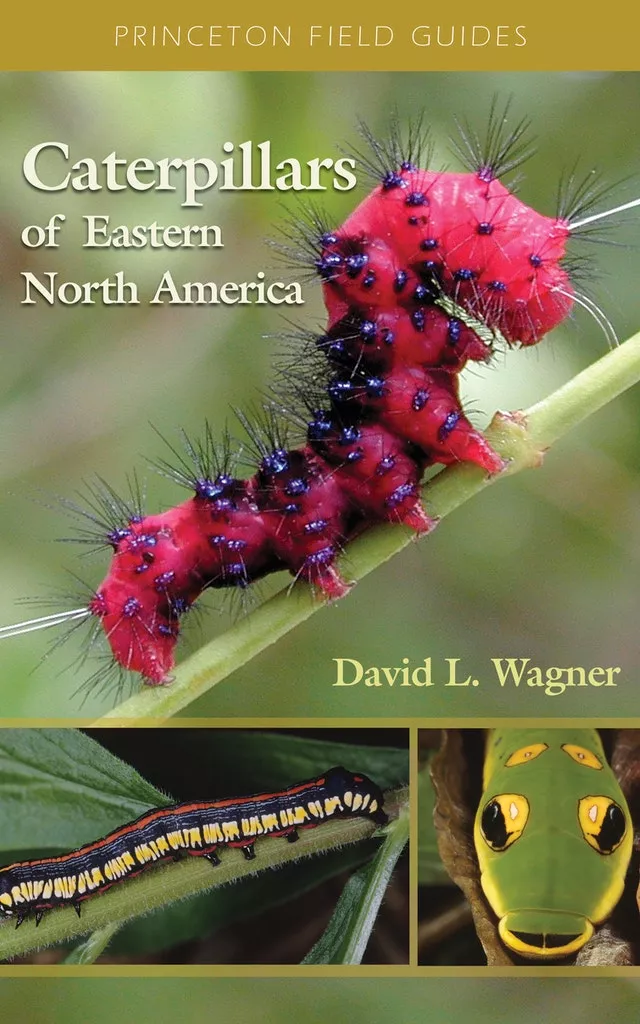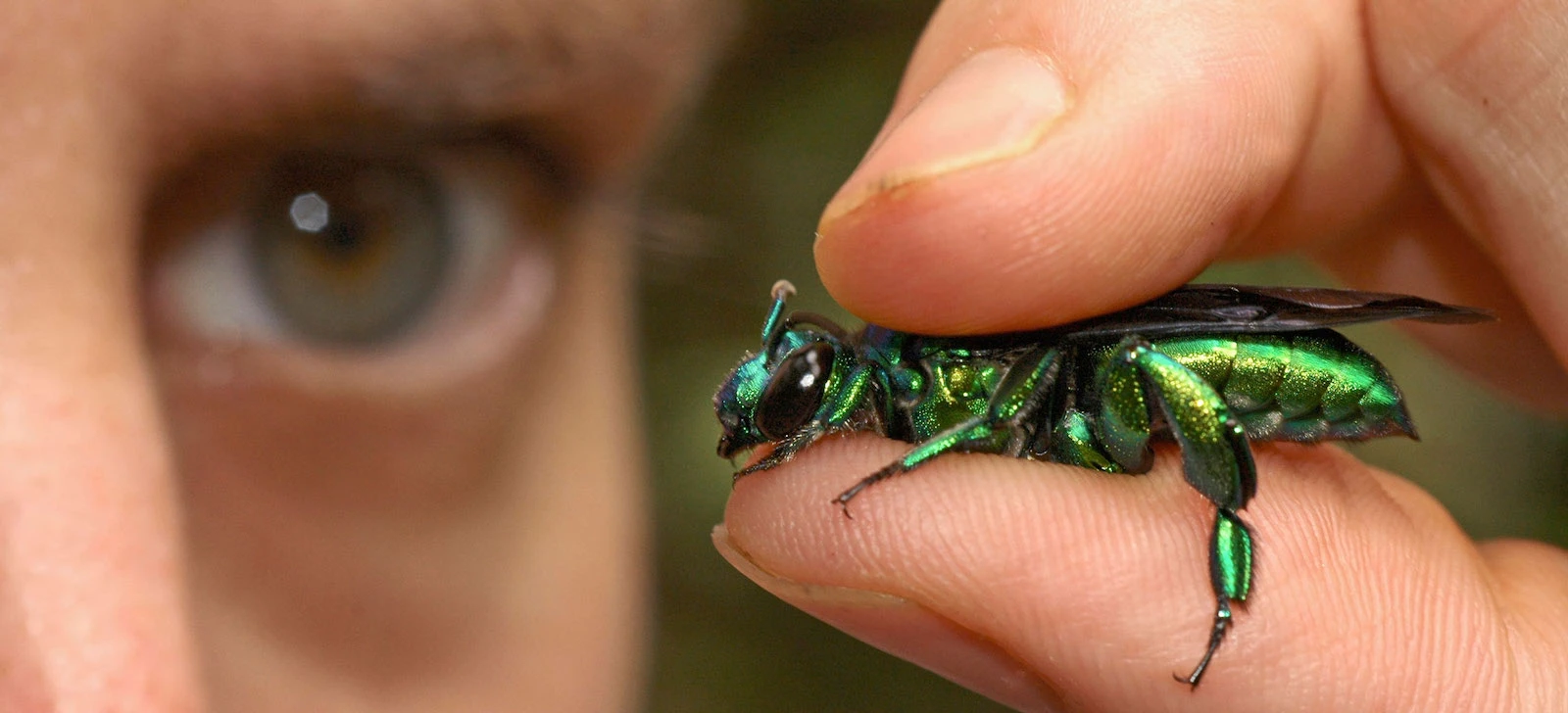
Category
AI-supported Species Identification Keys
We develop AI-supported species identification keys for a wide range of taxa, enabling fast and accurate recognition of species across different groups.
Over the years, we have collaborated with scientific institutions worldwide to enhance and digitise traditional identification keys.
Our solutions are created either by Sunbird’s in-house biologists or in close cooperation with leading taxonomists and subject-area experts.
With modern digital field guides on the rise, efficient species narrowing has become essential.
Combining ornithologists, entomologists, botanists, and specialists for less-studied taxa within one team, we offer deep biological and taxonomic expertise that most app development companies simply do not possess.
We look forward to discussing future projects and collaborations with you.
Learn more about our Citizen Science Apps and our App Your Book projects.
Our Expertise in
AI-supported Species Identification Keys
Sunbird Images develops and refines digital identification keys in collaboration with leading taxonomists and research institutions worldwide.
Our tools combine AI-based recognition algorithms with deep biological knowledge to make complex taxonomy accessible to professionals and citizen scientists alike.
Case Study
Developing an app from the book
“Caterpillars of Eastern North America”
with our expertise in AI-supported species identification keys
Princeton University Press
Impressed by our successful “All Birds” app series and their strong market presence,
we were approached by Robert Kirk of the Princeton Field Guides & Natural History Department
to turn David Wagner’s renowned field guide book
“Caterpillars of Eastern North America” into a comprehensive caterpillar identification app.
The specific challenge of this project was to develop, from scratch, an identification key for nearly 600 caterpillar species
that could be used effectively by both laymen and experts.
This was particularly demanding since many species show a high degree of variation in colouration and pattern,
making individuals of the same species appear very different from one another.
Below, we explain how we created a visually stunning and scientifically accurate app from the book.
How we turned the book into an app
Transforming the field guide Caterpillars of Eastern North America into a fully functional digital application required a carefully balanced combination of biological expertise, precise UX design, and technical innovation.
Our goal was to maintain the scientific depth and accuracy of the original book while making the identification process faster, more intuitive, and accessible for a broad audience.
To achieve this, our team developed a completely new digital identification key architecture, allowing users to identify hundreds of caterpillar species through simple and logical visual steps.
Each species profile was enriched with detailed photographs, metadata, and field information, creating a seamless link between printed taxonomy and interactive app functionality.
The collaboration with Princeton University Press and David L. Wagner ensured that scientific accuracy and educational value remained at the core of the project, wh
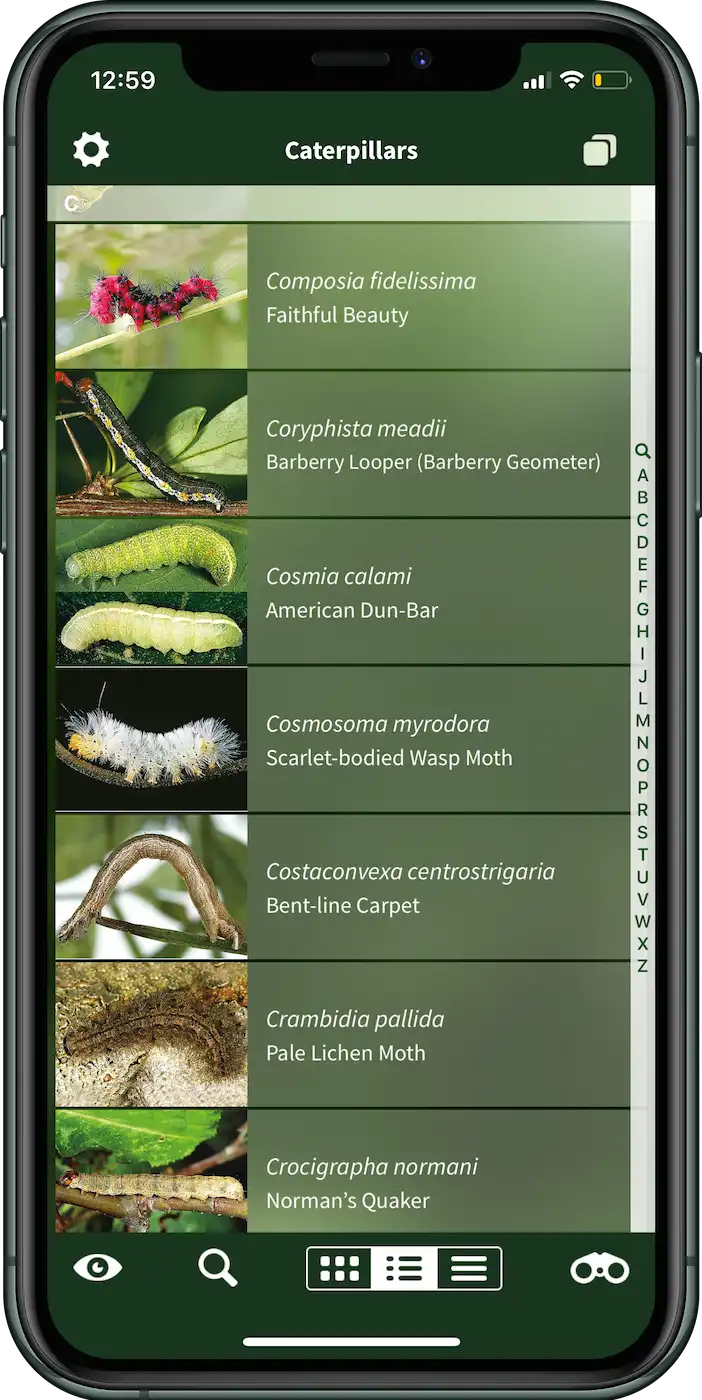
Challenges
Turn a field guide book with several hundred species into an app suitable for identification purposes with an appealing user interface design
Develop a digital identification key from scratch that is understandable and deployable by layman as well as caterpillar experts and scientists
Satisfy all project partners involved regarding the transformation from physical to digital product features, the presentation of content as well as the layout
Making of
During the development process, our design and biology teams worked closely together
to translate complex taxonomic information into a simple and visually guided app experience.
Define the characteristic traits of each caterpillar species,
balancing the scientific accuracy required by experts with the clarity needed for laypeople.
Design matching icons that visualise these traits in a way that is intuitive,
recognisable, and quick to use during species identification.
Develop an app structure and navigation concept that makes the identification process
both functional and enjoyable for everyone — from hobby naturalists to professional entomologists.
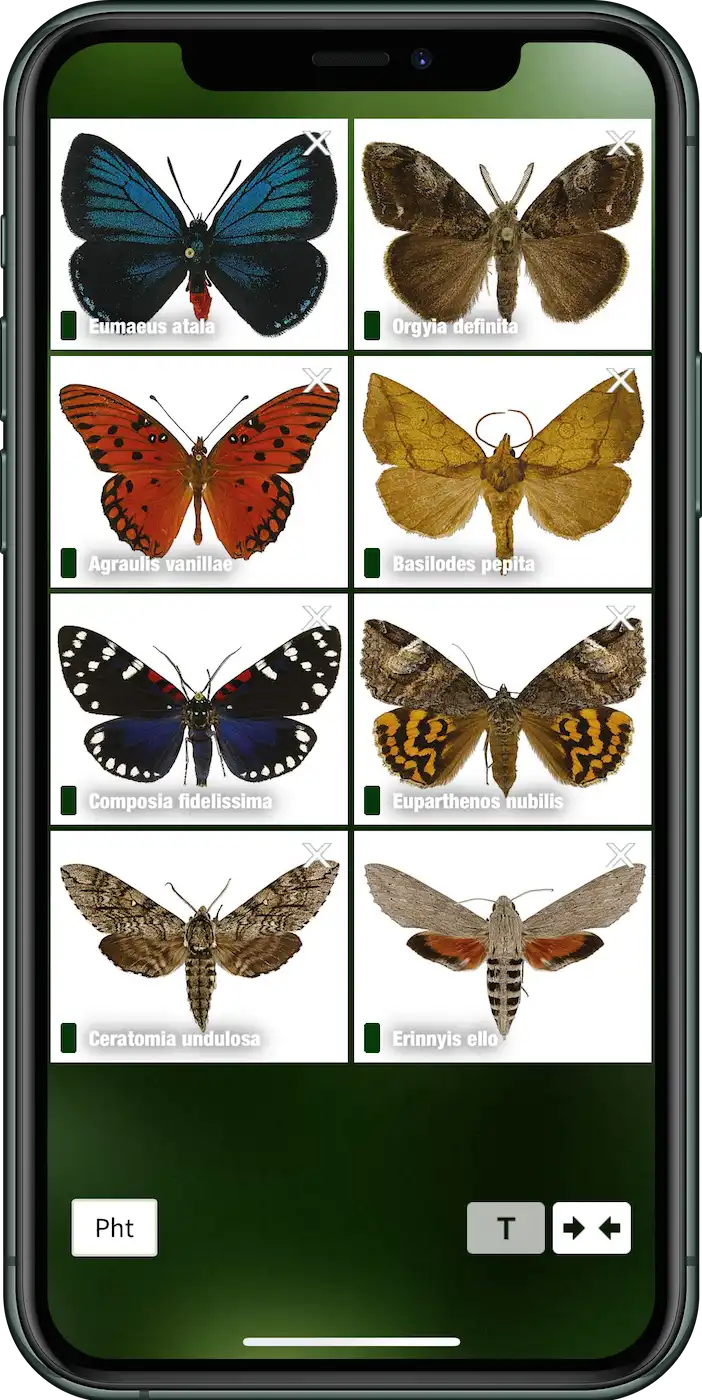
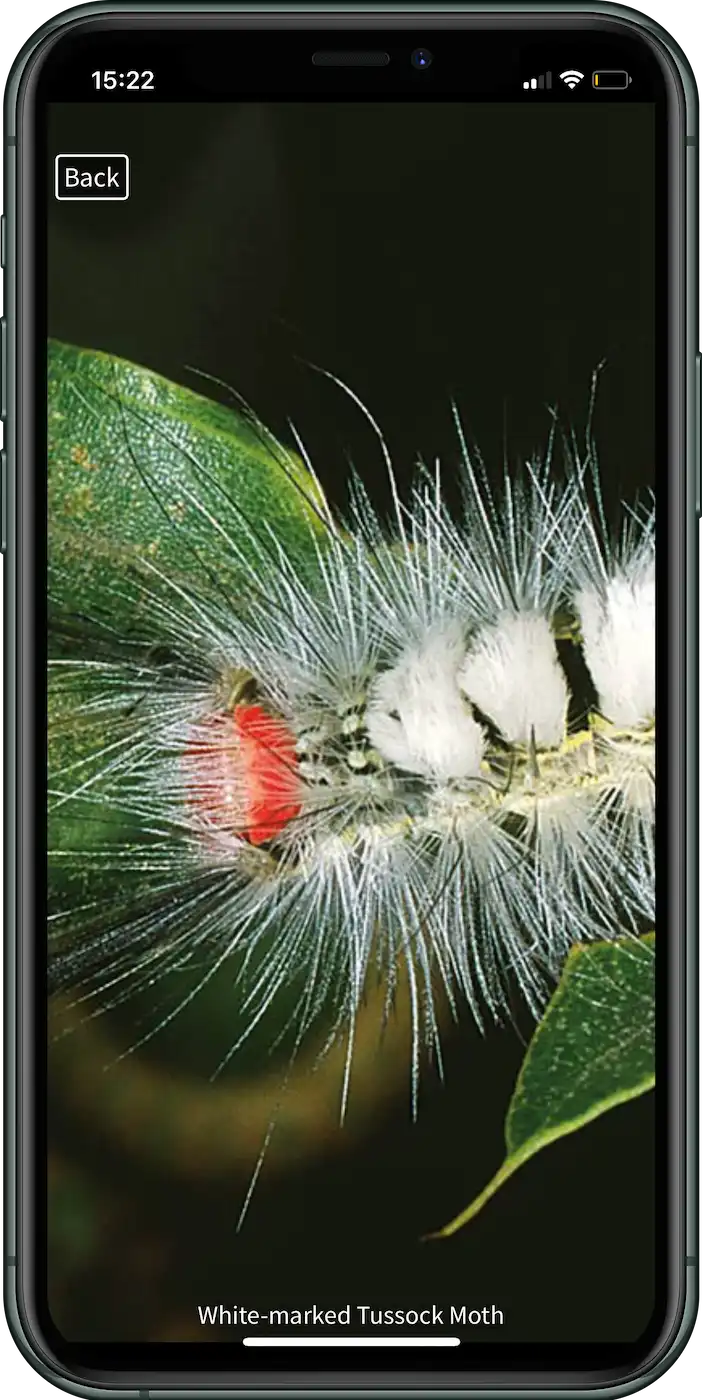
Illustrations – Superb Colour Images
Each of the 576 species is illustrated with up to four high-resolution photos.
While most main images display the full-grown caterpillar, additional photos show colour variations and, for 383 species, the corresponding adult butterfly or moth.
Comprehensive information is provided for each species, including taxonomy, description, occurrence, food plants, and additional interesting facts.
The Heart of the App – Our AI-supported Species Identification Key
An app-based identification key offers clear advantages over traditional field guides.
Users can narrow down species with just a few intuitive clicks, reaching accurate results in seconds.
In close collaboration with Prof. David L. Wagner’s field guide, the book author and leading caterpillar expert,
we developed a unique digital identification key that transforms complex taxonomy into an engaging, easy-to-use experience.
The system includes nine major morphological traits and 42 sub-traits,
ranging from colour combinations and body shape to tails, knobs, and hair patterns.
This structured approach enables fast and reliable identification across hundreds of species.
Each result is displayed in a preclusive manner, ensuring that the remaining species list becomes progressively more accurate with every selection.
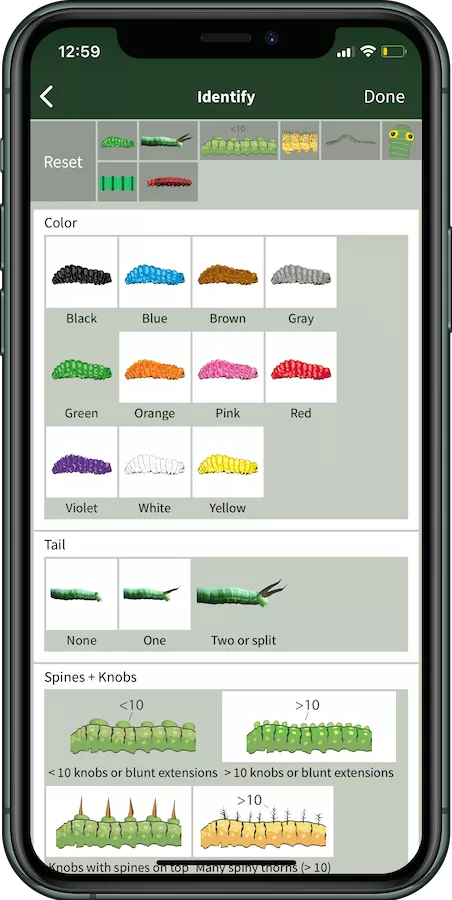
What the App Can Also Do for You
With more than 1,200 superb colour images, the app extends its usefulness beyond the eastern United States.
It supports caterpillar identification across southern Canada, parts of the Pacific Northwest, and—at a generic level—most regions west of the Mississippi.
Focusing on larger, commonly encountered caterpillars, the app appeals to gardeners, naturalists, and families as well as to field biologists, zoologists, and other professionals.
It brings scientific precision and visual beauty together in one accessible digital format, making nature discovery both fun and educational.

